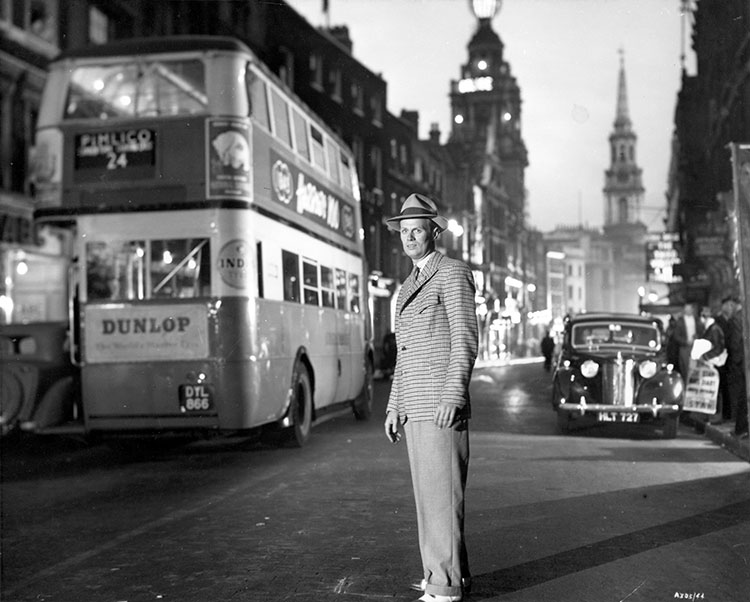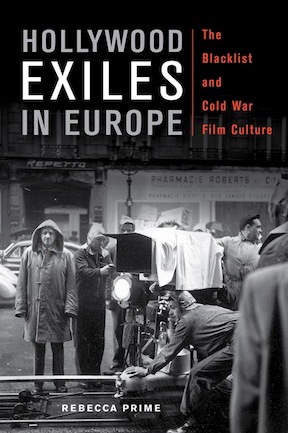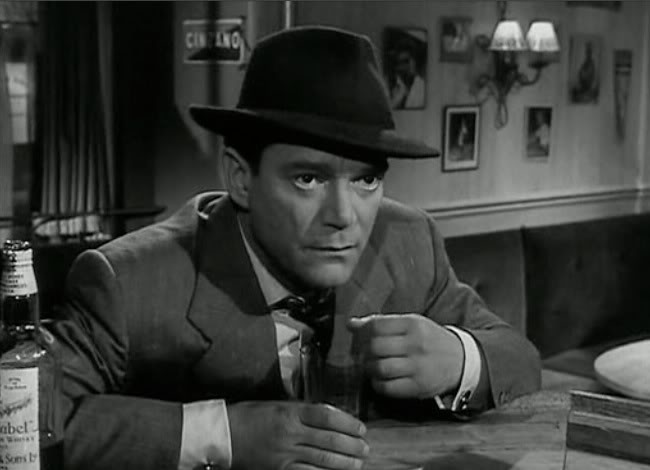
In a recent blog, I mentioned Rebecca Prime and her newly published book from Rutgers University Press, Hollywood Exiles in Europe: The Blacklist and Cold War Film Culture (2014). The book of was of interest to me, not only because Rebecca is a former UCLA student from my Silent Film class in 2003, but also because I have written extensively about German-Jewish exiles in Hollywood and wanted to see how she handled a similar phenomenon. Hollywood Exiles presents a previously untold history of the Hollywood blacklist, while contextualizing the fates of blacklisted writers and directors who emigrated to Europe within larger developments in post-WWII European film industries. These developments include the spate of British and French film noirs, produced in the 1950s in the wake of the reception of American noir; the move towards transnational co-productions with European tax credits and runaway Hollywood productions; and the birth of various “New Waves” as art cinemas. Suddenly, we can see the exiles in the center, rather than at the margins of these histories, thanks to Rebecca Prime.

Certainly, there is a growing literature on the Hollywood blacklist, which began with Larry Ceplair and Steven Englund’s ground-breaking The Inquisition in Hollywood: Politics in the Film Community (2003), which I cited repeatedly in my dissertation on German Exile’s Anti-Nazi Films, and has since ballooned. The latest example is Patrick McGilligan and Paul Buhle’s Tender Comrades: A Backstory of the Hollywood Blacklist (2012). However, while most sources focus on the HUAC hearings and its repercussions in Hollywood, Prime traces the career paths of the blacklisted abroad, especially in France, Italy and the United Kingdom. One glimpses pieces of that story in the Tender Comrades interviews, but Prime’s accomplishment is her historical assessment of the quantity and quality of the work produced after the blacklist was instituted. Her startling conclusion is that it wasn’t only Hollywood’s embarrassment of having blacklisted writers continually winning Academy Awards in the late-1950s (if their names had appeared)—as in the case of Michael Wilson, Carl Foreman, Dalton Trumbo and Nedrick Young—but also the fact that blacklisted writers and directors, like Jules Dassin, Joseph Losey, Carl Foreman and Cy Endfield were getting their “foreign” films distributed in America with their own names attached. In other words, the blacklisted in Europe played a significant and activist role in breaking the blacklist; it was not just a matter of some independent producers, like Preminger and Kubrick, giving on-screen credit to Trumbo for Exodus (1960) and Spartacus (1960), that ended the blacklist, according to Prime.

Evaluating the work of the blacklisted in Europe was trickier. Were the films produced by American writers and directors in foreign studios American or European? Did the work of John Berry belong to French cinema, and was Joseph Losey British or Jules Dassin Greek? In fact, like the German-Jewish exiles in Hollywood a generation earlier, their films were often hybrids, employing cultural codes from multiple contexts. Jules Dassin’s highly regarded London noir, Night and the City (1950), was rejected by the British as too American. His follow-up, Du rififi chez les homes [Rififi] (1954) was considered a masterpiece by French critics, who then brutally savaged his next film, Celui qui doit mourir [He Who Must Die] (1956) for not being French enough. John Berry revitalized the French série noire with his Eddie Constantine parody, Je suis un sentimental (1955), then was massacred (along with his blacklisted writers Lee and Tammy Gold) for turning Prosper Mérimée’s iconically French short story Tamango into Hollywood romance in 1958.
Interestingly, in the above cases, as with other exiles, they succeeded in film noirs, which, as a genre, is inherently a hybrid and thus travelled well across the Atlantic in both directions. When they tried to expand beyond noirs, they often failed—unless they found another genre, as Foreman did with the WWII epic. Meanwhile, Joseph Losey was canonized by the French critics as an auteur of British cinema, after the belated release in Paris of his noir, Time Without Pity (1957).
And the blacklist brought hard times to many. Bernard Vorhaus, who had an early success in Pardon My French (1951), was unable to find work and left the industry to become a real estate agent. Most blacklistees in Europe went through years of unemployment and were usually not able to get their careers back on track until the mid- to late-1950s. Cy Endfield, who had directed some films abroad, became so desperate that he eventually agreed in 1960 to testify at HUAC and name names, while others were declaring the blacklist over. It wasn’t. Michael Wilson, despite two uncredited Oscar nominations, was not given a screen credit until The Sandpiper (1965). Ultimately, though, Prime believes the blacklisted not only survived, but fought their way back to Hollywood, and influenced industry developments on the way, despite the “profoundly disruptive experience on a creative level” that the blacklist brought with it (p. 176).
In celebration of Rebecca Prime’s book, UCLA Film & Television Archive has asked Rebecca to curate a film program, "Hollywood Exiles in Europe" in July and August, followed by my own look at German-Jewish exiles in Hollywood, “Exile Noir,” in August and September. “Hollywood Exiles in Europe” will include many of the above named films, and also Ben Barzman’s Christ in Concrete (1950), Cy Endfield’s Hell Drivers (1956), Joseph Losey’s Eva (1962) and Carl Foreman’s The Victors (1963). So, read the book and then come see the movies.






 Mobile Navigation
Mobile Navigation

